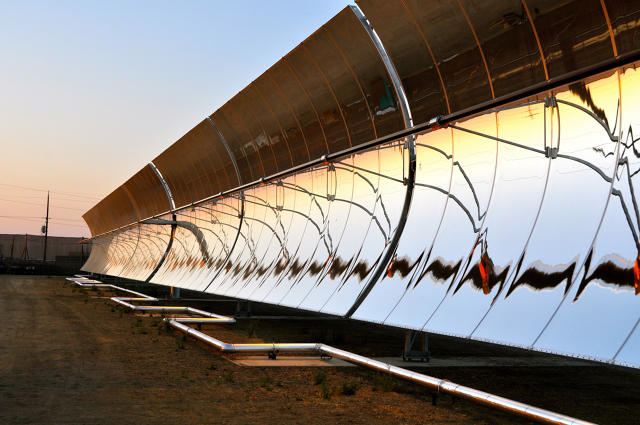California Is Building The Largest Solar Desalination Plant
Published on by Water Network Research, Official research team of The Water Network in Government
In the Central Valley, nowhere near the ocean, there's lots of salty waste irrigation water—and not enough to drink
If you want to take a shower or wash dishes in East Porterville, California, you'll probably have to use a bucket. The water stopped running in most houses over a year ago. But nearby, farmers are paying to get rid of around 300 billion gallons of water a year.
The paradox is a result of a geological quirk of the area: Soil in the Central Valley is full of natural salt. That creates problems every time a farmer irrigates a field—the extra-salty runoff can harm both land and wildlife, so water districts have to deal with it. But desalination can turn the runoff from a problem into a valuable resource.
A new solar-powered desalination plant, which will likely begin construction early next year in Fresno County, will make enough water for 10,000 homes or 2,000 acres of cropland in a year.
While most desalination technology is used on coasts to turn ocean water into drinking water, WaterFX, the San Francisco-based startup behind the new plant, thinks it makes sense for California to focus on polluted inland farm water instead.
"We see it as a much lower hanging fruit to treat water that's already a disposal problem," says WaterFX founder Aaron Mandell. "It has a cost, it has disposal issues. So if you can recover it, it's a much stronger value proposition than to desalinate the ocean—where not only is there no economic incentive to desalinate seawater, but it's very difficult to permit and build a plant on the coast."
The plants are deliberately designed at a small scale, unlike coastal plants like the massive billion-dollar facility that's about to open in San Diego. He compares it to the way rooftop solar is spreading faster than large-scale power plants.
"Our whole philosophy is that in order to have large-scale impact, we actually have to get to small scale with desalination," Mandell says. "Rather than building a handful of billion-dollar plants on the coasts, which take eight years to permit and a lot of money, if we can get to small scale, we can have thousands and thousands of plants all up and down the Central Valley."
Eventually, small farms may each have their own mini-desalination plant to treat irrigation water. First, though, the company is focusing on the biggest users, which already have infrastructure to collect drainage water. Next they'll move on to big industry, like tech companies that use huge amounts of water to keep servers cool.
"As the technology matures and we get to smaller-scale systems that are fully automated and easy to use, and can scale down to very small sizes, then you can ultimately get to single family farms," Mandell says.
WaterFX's design has another major advantage over traditional desalination: It runs fully on solar power, drastically shrinking the carbon footprint. When it removes the salt from the water, it turns it into usable products; traditional desalination dumps salty brine back into the sea, which can harm marine ecosystems.
Source: FastCoexist
Read More Related Content On This Topic - Click Here
Media
Taxonomy
- Solar Energy
- Desalination
- Desalination Plant